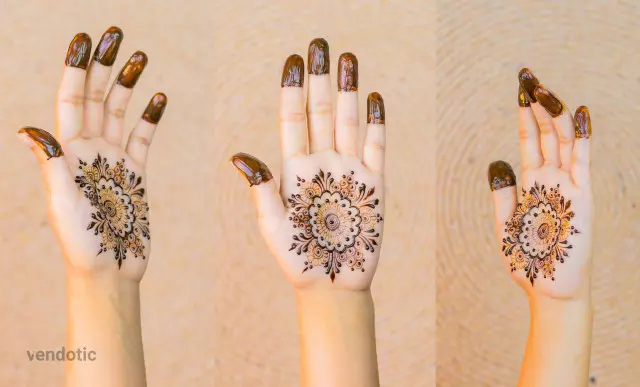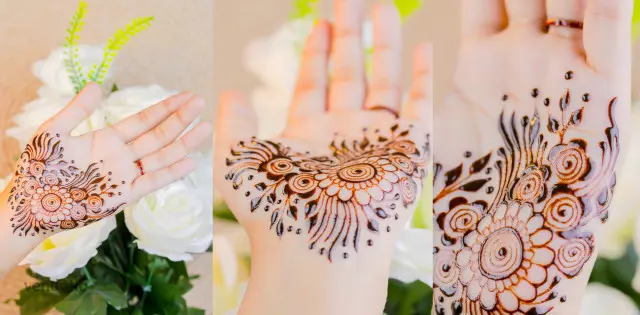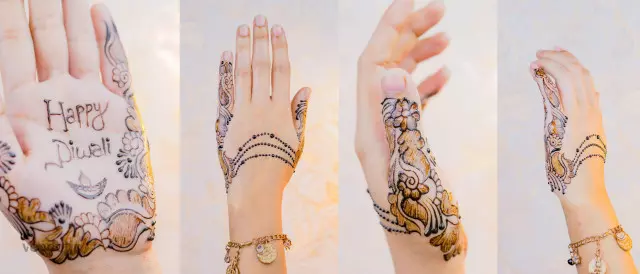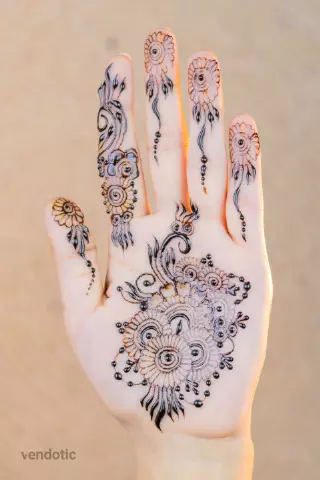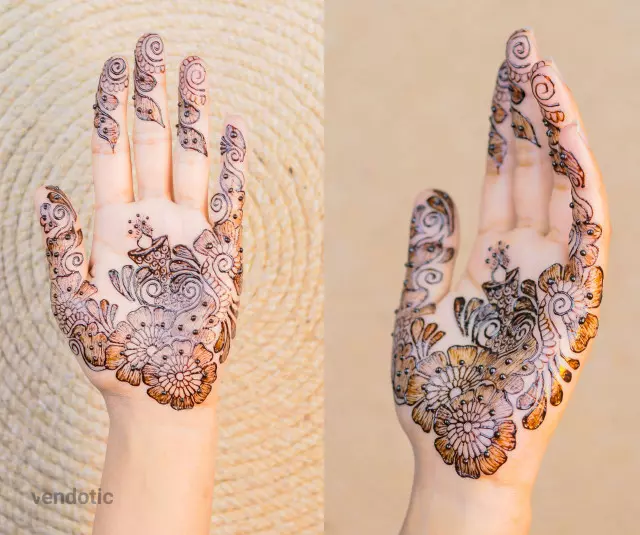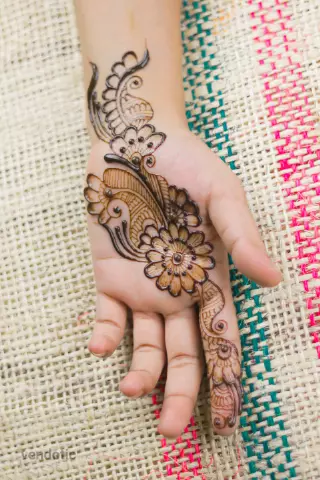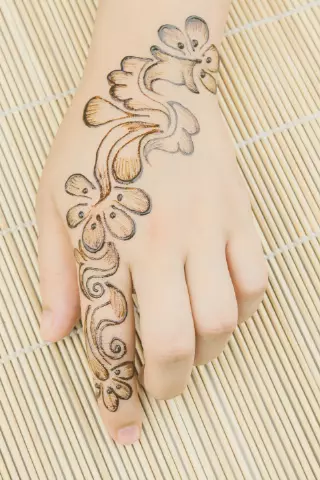Mehndi: The Art of Henna
Henna, also known as mehndi, is a beautiful and ancient form of body art that has been practiced for centuries in various cultures around the world. Its intricate designs, cultural significance, and natural origins make mehndi a fascinating and enduring art form. In this article, we will explore the origins of mehndi, the types of designs, and other interesting aspects of henna art.
The Origins of Mehndi:
Mehndi is believed to have originated in ancient Egypt and spread to various parts of the world, including India, North Africa, and the Middle East. The word "mehndi" is derived from the Sanskrit word "mendhika," which refers to the henna plant itself. The leaves of the henna plant are dried, crushed, and turned into a paste, which is then used to create intricate and temporary body art. Mehndi has been an integral part of cultural and religious celebrations in many regions, with weddings being one of the most prominent occasions for its application.
Types of Mehndi Designs:
Mehandi designs can be broadly categorized into several types, each with its own unique characteristics and cultural significance.
Indian Mehndi: This style is known for its intricate and elaborate designs that cover the hands and feet. Indian mehndi often features motifs of paisleys, flowers, and peacocks. Bridal mehndi in India is particularly famous, with brides getting their hands and feet adorned with intricate designs as a symbol of their impending nuptials.
Arabic Mehndi: Arabic mehndi is characterized by its bold and free-flowing designs. It typically covers less of the skin compared to Indian mehndi and often includes geometric patterns, vines, and leaves. Arabic mehndi is known for its simplicity and elegance.
Moroccan Mehndi: Moroccan mehndi draws inspiration from traditional Islamic art and architecture. It features geometric and symmetrical patterns, including stars, domes, and lattice-like designs. It is commonly applied on the hands and feet, as well as other body parts.
Pakistani Mehndi: Pakistani mehndi designs are a fusion of Indian and Arabic styles. They are often characterized by a balance of intricate details and bold, flowing lines. These designs can cover the entire hand and extend up the arms.
Western Mehndi: In recent years, mehndi has gained popularity in Western cultures as well. It's often used as a form of temporary body art for special events or festivals. Western mehndi may incorporate a variety of styles and designs, offering a creative and unique twist to the traditional art.
Mehndi, with its roots in ancient India, has been a symbol of celebration, joy, and auspiciousness for thousands of years. Its history is deeply intertwined with various cultural festivities, such as weddings and religious ceremonies. The intricate patterns and designs not only adorn the skin but also symbolize love and prosperity.
Mehndi is a form of art that transcends generations. It's not just a part of history but a living tradition that continues to evolve. Today, it's not uncommon to see mehndi artists experimenting with contemporary designs that blend traditional and modern aesthetics. The allure of mehndi lies in its ability to adapt and remain relevant, which makes it a beloved choice for brides, party-goers, and everyone in between.
Mehndi design simple, often referred to as "beginner's mehndi," is an excellent starting point for those who are new to this art. The beauty of simplicity in mehndi lies in its minimalistic charm. These designs usually feature uncomplicated patterns that are easy to apply and perfect for beginners.
For those looking to embark on their mehndi journey, starting with easy designs is the way to go. The emphasis here is on uncomplicated motifs and patterns, ensuring a hassle-free and enjoyable experience. With a little practice, you'll be able to create stunning designs on your own.
Back hand mehndi designs add a touch of intrigue to your mehndi experience. These designs are unique in their approach, offering intricate patterns that extend from your wrist to your fingertips. Back hand mehndi is a popular choice for those who want to make a statement and showcase their mehndi on special occasions.
Arabic mehndi design has become a global sensation for its bold and contemporary appeal. These designs are characterized by their free-flowing patterns, with floral and vine motifs taking center stage. Arabic mehndi is known for its artful simplicity, making it a favorite for parties and festive celebrations.
For brides-to-be, mehndi plays a pivotal role in their wedding preparations. Bridal mehndi design is more than just body art; it's a rite of passage, an expression of love, and a symbol of good fortune. These designs often incorporate intricate elements, such as the couple's initials, hidden within the patterns.
Creating your own mehndi design can be a rewarding and artistic experience. It's a canvas of self-expression, where your creativity knows no bounds. With a steady hand, a cone of henna, and a vision, you can craft your mehndi design easy and beautiful.
To get started, you'll need the right materials, a bit of practice, and the right guidance. In this section, we'll provide a step-by-step guide to help you create your own mehndi masterpiece. From preparing the henna paste to mastering the art of application, we've got you covered.
Mehndi is more than just an art form; it's a form of self-expression. The patterns and designs you choose reflect your individuality and your unique story. Whether you're creating mehndi for a special occasion or just for the love of art, let your mehndi tell your story.
In the end, mehndi design is not just about the final product; it's about the journey. The process of applying mehndi is a cherished ritual that brings people together, fosters creativity, and leaves a lasting mark on your skin and your memories.
Mehndi design is an ancient practice that has transcended generations and borders. It has its roots in India, where it's a significant part of the cultural and social fabric. Mehndi is applied to the skin using a cone or a brush, creating intricate patterns that stain the skin temporarily. The designs can range from traditional to contemporary, and each has its unique charm.
The history of mehndi dates back thousands of years. It's believed to have originated in ancient Egypt, making its way to India through trade routes. Over time, it has evolved into a diverse art form, reflecting the cultures and traditions of different regions.
Traditional mehndi designs are deeply rooted in Indian culture. These designs often feature intricate patterns, with motifs like peacocks, lotus flowers, and paisleys. They are characterized by their attention to detail and are a staple at Indian weddings.
For brides, mehndi is an essential part of the wedding ritual. Bridal mehndi designs are elaborate and often tell a story. They may incorporate the couple's love story, the bride's future aspirations, and blessings for a happy marriage.
On the festival of Karva Chauth, married women apply mehndi to their hands and feet. These designs are known for their intricate patterns and are symbols of love and devotion.
The world of mehndi has evolved, and contemporary designs have gained popularity. These designs often feature a fusion of traditional motifs with modern elements. They are versatile and can be adapted to various occasions.
Arabic mehndi is known for its bold and geometric designs. It typically includes large floral patterns and leaves open spaces, creating a stunning contrast with the skin.
For those who want a little extra sparkle, glitter and colored mehndi are the perfect choice. They can be a fun addition to festivities, allowing you to express your creativity.
Whether you're a mehndi enthusiast or a beginner, these tips will help you achieve stunning designs:
Quality Henna: Always choose high-quality henna to ensure a deep and long-lasting stain.
Practice Makes Perfect: If you're new to mehndi, practice on paper first to build confidence.
Steady Hand: A steady hand is crucial for intricate designs. Take your time to create precise patterns.
Design Selection: Choose a design that complements the occasion and your personal style.
Aftercare: To make the mehndi last longer, avoid water for the first 24 hours after application.
In conclusion, mehndi design is a beautiful art form that has stood the test of time. Whether you're looking for mehndi design simple, back hand mehndi design, or exploring the allure of bridal mehndi design, the world of mehndi offers a rich tapestry of choices to express your unique style and celebrate special moments in life. So, why not give it a try and embrace the art of mehndi, creating your own mehndi design easy and beautiful? The canvas is yours to adorn, and the journey is as enchanting as the destination.
(Note: The images related to mehndi design mentioned in this article can be found below for you to download and enjoy.)
Q: How long does mehndi typically last?
A: Mehndi usually lasts for 1-2 weeks, depending on factors like skin type and aftercare.
Q: Can anyone apply mehndi, or is it reserved for specific occasions?
A: Anyone can apply mehndi, but it's most commonly associated with weddings and festivals.
Q: What's the difference between black and red mehndi?
A: Red mehndi is natural and fades to a reddish-brown color. Black mehndi contains chemicals and results in a black stain.
Q: Are there any cultural taboos related to mehndi?
A: In some cultures, it's considered inauspicious to apply mehndi during mourning periods.
Q: Can I create my own mehndi designs?
A: Absolutely! Mehndi is all about creativity, and you can certainly design your own patterns.
Q: Is mehndi safe for the skin?
A: Natural mehndi is safe for the skin, but be cautious of black henna, which may contain harmful chemicals.
